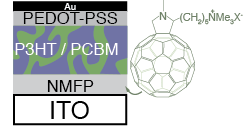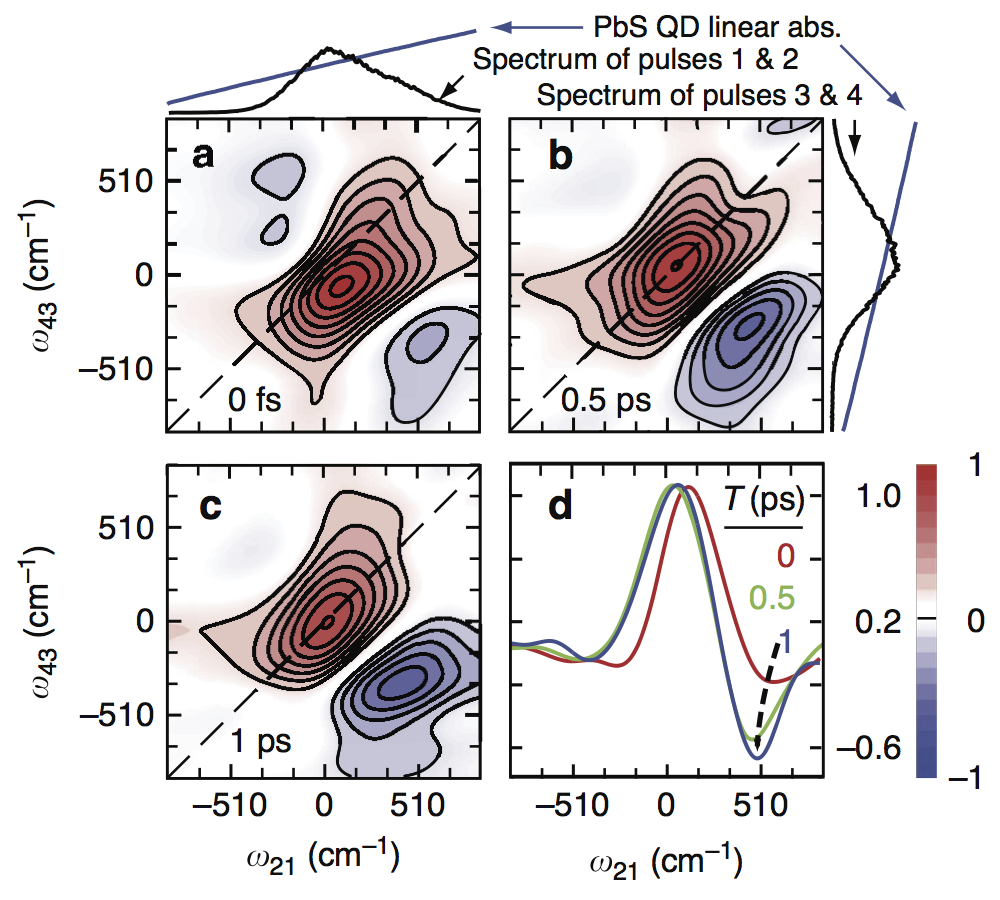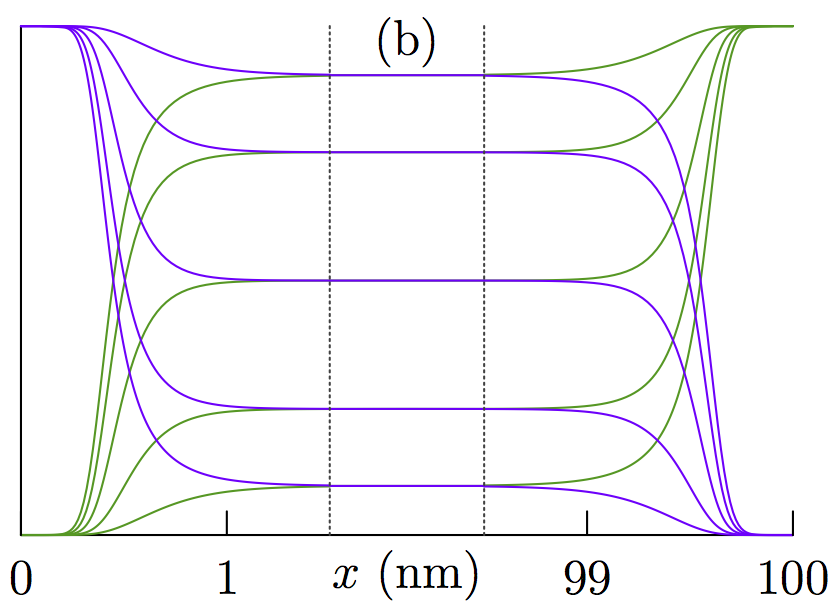The Lonergan group’s research deals with electrical and electrochemical phenomena in electroactive materials and at interfaces. Currently, we study these phenomena in the context of solar cells (photovoltaics). These studies involve the synthesis of new materials, the fabrication of solar cells, the use of standard and specialized electrical characterization methods, and numerical simulation.

The conversion of sunlight into electricity involves the following steps (see figure): (1) the absorption of light by an absorber material to create a photoexcitation; (2) the separation of the resulting photoexcitation into free carriers (electrons and holes) either in the absorber or at an interface; (3) the transport of carriers to electrodes; and (4) the selective collection of electrons and holes at different interfaces before recombination (R), often driven by defect states in the absorber. We study these processes using a variety of techniques and on a variety of systems including those based on organic, inorganic (thin film and single crystal), and nanoparticle semiconductors.
 A. Contact Selectivity. The contacts in a photovoltaic must selectively collect one of either the electron or the hole. We study how thin layers of organic semiconductors modify the selectivity and also recombination properties of contacts for organic photovoltaics and emerging perovskite-based photovoltaics.
A. Contact Selectivity. The contacts in a photovoltaic must selectively collect one of either the electron or the hole. We study how thin layers of organic semiconductors modify the selectivity and also recombination properties of contacts for organic photovoltaics and emerging perovskite-based photovoltaics.
 B. Defect Characterization. Defects can generate electronic states in the middle of the gap that contribute to undesirable recombination. We use advanced junction capacitance techniques to study the energy and density of defect states, primarily in thin film semiconductors, e.g. CdTe and methylammonium lead-halide perovskites.
B. Defect Characterization. Defects can generate electronic states in the middle of the gap that contribute to undesirable recombination. We use advanced junction capacitance techniques to study the energy and density of defect states, primarily in thin film semiconductors, e.g. CdTe and methylammonium lead-halide perovskites.
 C. Dynamics of Photoexcitation. Depending on the absorber and temperature, the absorption of a photon can initially form a bound exciton. In collaboration with Andy Marcus in the Department, we use action-signal detected two-dimensional spectroscopy to study the femtosecond dynamics of excitons in nanoparticle thin films.
C. Dynamics of Photoexcitation. Depending on the absorber and temperature, the absorption of a photon can initially form a bound exciton. In collaboration with Andy Marcus in the Department, we use action-signal detected two-dimensional spectroscopy to study the femtosecond dynamics of excitons in nanoparticle thin films.
 D. Bulk Transport. The transport of electrons and holes through the bulk of materials is fundamental to the collection of photogenerated carriers. We have explored this issue in mixed ionic/electronic conductors, which are finding application as interfacial layers to modify charge carrier collection at selective contacts.
D. Bulk Transport. The transport of electrons and holes through the bulk of materials is fundamental to the collection of photogenerated carriers. We have explored this issue in mixed ionic/electronic conductors, which are finding application as interfacial layers to modify charge carrier collection at selective contacts.